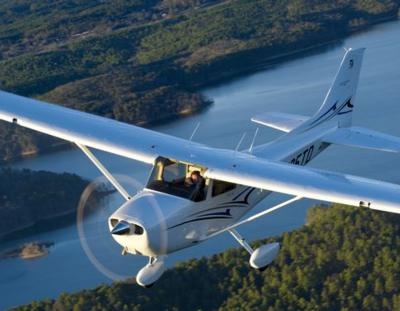Was A First Instructional Flight For Student Pilot
The NTSB has released its probable cause report from an accident which occurred in Hawaii in January. The flight instructor reported that he was performing an introductory flight lesson for a student with her parents on board as passengers.

According to the report, the Cessna 172 was registered to Hawaiian Night Lights LLC, and operated by the pilot under the provisions of 14 Code of Federal Regulations (CFR) Part 91. The certified flight instructor (CFI), student pilot undergoing instruction, and one passenger sustained minor injuries; a second passenger sustained serious injuries. The airplane sustained substantial damage to the fuselage and both wings during the accident sequence. The instructional flight departed Honolulu International Airport, Honolulu, at 1304. Visual meteorological conditions prevailed, and no flight plan had been filed.
The student was a Japanese citizen, according to the flight instructor.
The CFI stated that they planned to flying for 2 hours, and prior to departure, decided to fly east towards Molokai due to unfavorable weather conditions around the Island of Oahu. The departure was uneventful and they flew east, following the northern coastline towards the end of Molokai.
The student flew the majority of the flight following the shoreline until the flight instructor took the flight controls and turned the airplane inland to return to the airport. Having reached a waterfall as they approached the eastern shore, the CFI took the controls and initiated a circling climb inland over the mountainous terrain.
During the climb he noticed that the engine was not producing full power, even though the throttle control was fully forward. He estimated the engine speed to be about 200 rpm lower than normal, and he applied carburetor heat. The flight progressed over the mountains at an altitude of about 3,500 ft mean sea level (500 to 1,000 ft above ground level) while he maintained best rate of climb airspeed. As they passed over a ridge the airplane began to descend at 400 ft per minute, and they became trapped below the peaks of surrounding terrain.

The pilot turned off carburetor heat and began performing tight turns and chandelle maneuvers in an effort to clear terrain while now flying at best angle of climb airspeed. He warned the passengers of the impending crash, however, as they did not speak English, they could not fully understand. As they approached the valley floor he extended the flaps and told the passengers to brace for impact.
The airplane came to rest at the 3,000 ft level, on the eastern side of the island, 73 miles from the departure airport. Video of the accident site taken by search and rescue personnel revealed that the airplane was situated in densely wooded terrain within a crevasse just below a ridgeline.
Due to the inhospitable nature of the terrain, the airplane could not be examined at the accident site. Additionally, the airplane was not insured, and at the time of completion of this report it had not been recovered from the accident site; therefore, no examination was performed.
The National Transportation Safety Board determined the probable cause of this accident to be a partial loss of engine power during cruise flight for reasons that could not be determined because the airplane was not recovered.
(Image from file. Not accident airplane)
 ANN's Daily Aero-Linx (05.04.24)
ANN's Daily Aero-Linx (05.04.24) NTSB Final Report: Quest Aircraft Co Inc Kodiak 100
NTSB Final Report: Quest Aircraft Co Inc Kodiak 100 Aero-News: Quote of the Day (05.04.24)
Aero-News: Quote of the Day (05.04.24) Aero-News: Quote of the Day (05.05.24)
Aero-News: Quote of the Day (05.05.24) Read/Watch/Listen... ANN Does It All
Read/Watch/Listen... ANN Does It All




